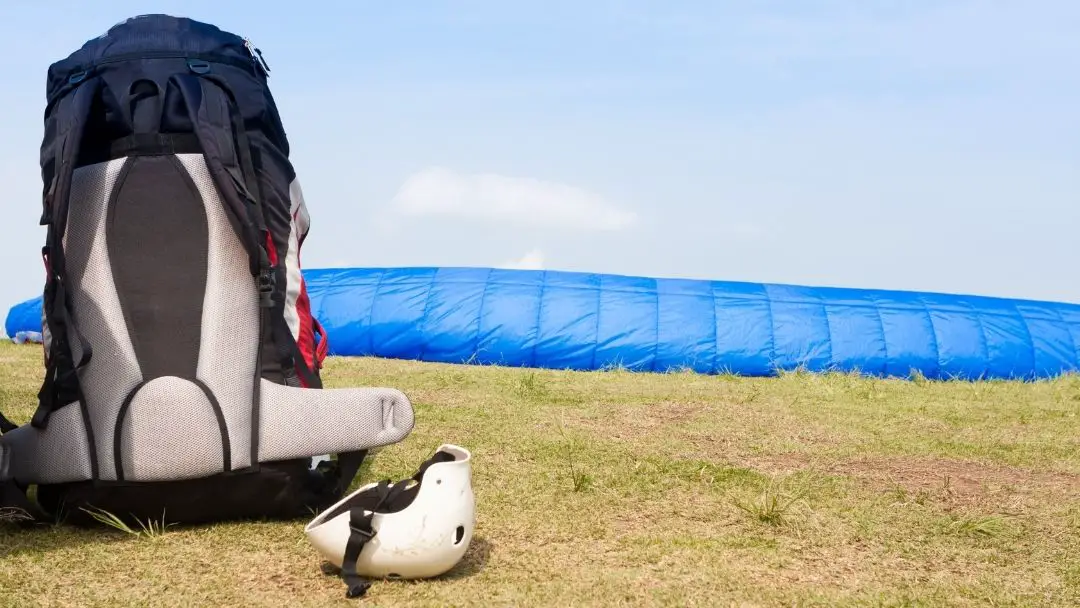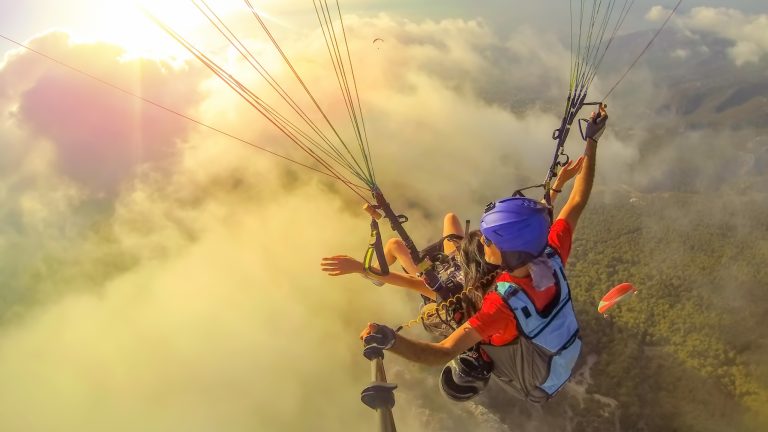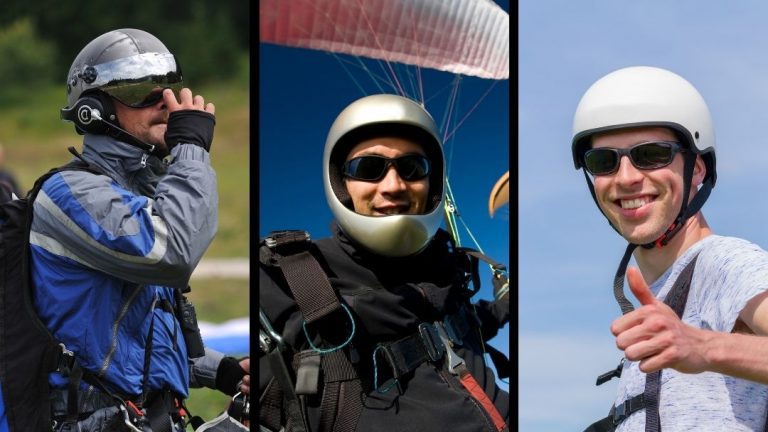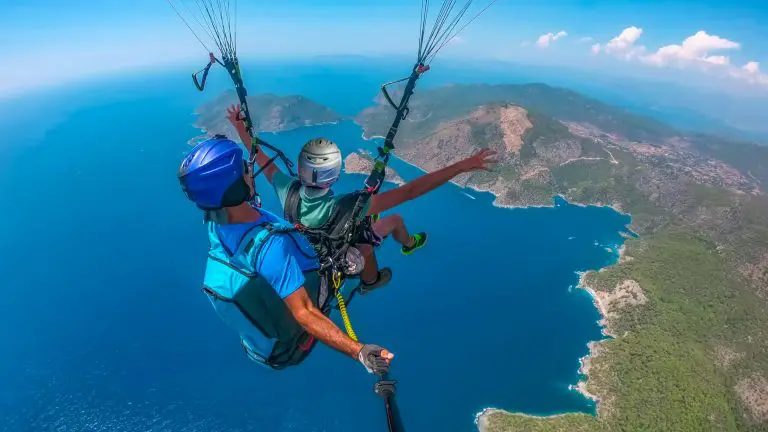Paragliding Equipment – What do you need to get started?
To begin paragliding, there are a number of essential items you will need, and we will cover them in order of importance.
Additionally, there are optional extras based on specific flying preferences and needs, such as flying long distances or venturing into remote areas, which may require additional safety and survival gear.
Essential Paragliding Equipment – What do you need to start paragliding?
Let’s start with the bare minimum equipment you need to start paragliding. This list covers the essential items that will get you in the air, whether you plan to train at a school or fly solo.
However, please note that many schools provide equipment for training, so it’s important to check what is included before purchasing your own gear.
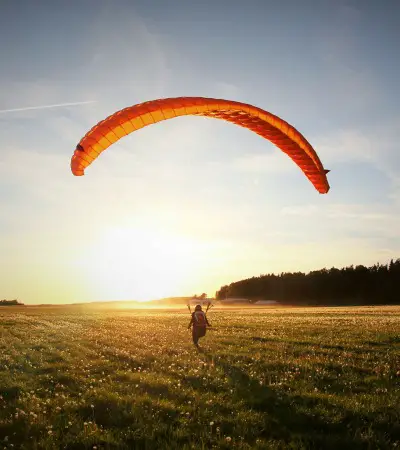
Paraglider
The most obvious item you’ll need is a paraglider wing. It’s essential to find the right wing that matches your weight and skill level. When purchasing a paragliding wing, consider the following factors:
- Total flying weight: This allows you to select the correct size glider.
- Skill level and experience: Beginners typically start with a class EN-A glider as they provide high levels of safety and are ideal for learning.
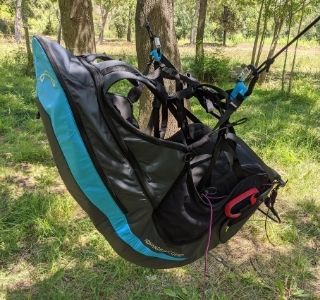
Harness
There are various types of paragliding harnesses available, each serving different purposes. It’s important to choose the correct harness for your size and intended use. Here are some common types of harnesses:
- Standard harnesses
These provide an upright seating position and offer safety and control suitable for flights lasting a couple of hours or less. They are commonly used in schools due to their ease of use. - Hiking Harness
If you’re interested in “hike and fly” adventures, lightweight hiking harnesses are a great option. Some models are reversible, eliminating the need for an additional carrying bag. - Pod Harness
Experienced pilots often prefer pod harnesses, which provide a laid-back seating position and are designed for optimal performance in the sky. However, they require more familiarity and control, making them less suitable for beginners. - Minimalist Harnesses
These ultra-lightweight harnesses are used in specific situations like aerobatics when minimizing weight is crucial.
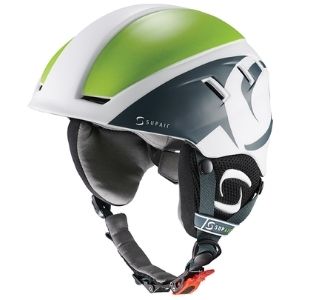
Paragliding Helmet
A helmet is one of the most crucial safety items for all pilots. There are different types of helmets available:
- Open-face paragliding helmets
These helmets, such as the Supair Pilot Helmet, are commonly used and offer good safety and visibility in various weather conditions. - Full-face paragliding helmets
Primarily used in competitions and by experienced pilots, full-face helmets provide enhanced safety, especially in the event of a forward fall.
Note that some pilots also use snow helmets as an alternative, although they may offer slightly less protection. Numerous options are available, so refer to our post on helmets to learn more.
While there are a number of options specifically for paragliding it is quite common for pilots to use snow helmets. While not quite as safe they are still a good option and there are many more options available.
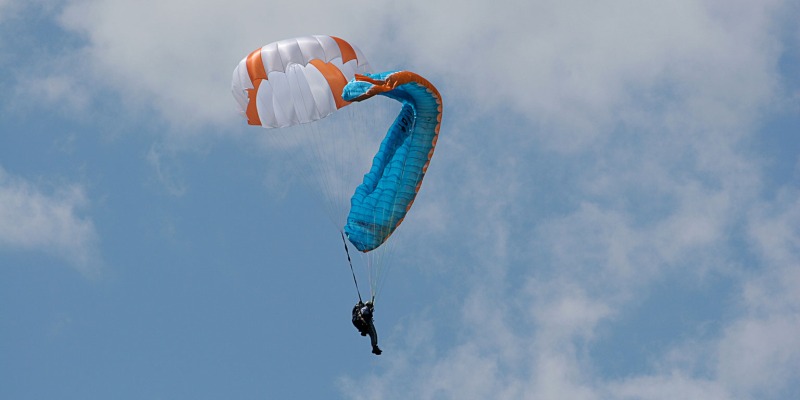
Reserve Parachute
While not mandatory, a reserve parachute is highly recommended for beginners and most pilots.
Only pilots who have completed SIV (Simulation d’Incident en Vol) training and have a specific reason not to carry a reserve should consider omitting it.
It is crucial to learn when and how to deploy a reserve parachute, including controlling the main chute after deployment.
This concludes this list of Essential Equipment for paragliding. There are other items like a phone and radio that most pilots will carry every time anyway but these are not 100% required.
Optional Paragliding Equipment
There are many optional pieces of Paragliding equipment that you can choose to fly with. Some pilots will say some of these are required, like a variometer and a radio but they are not strictly required.
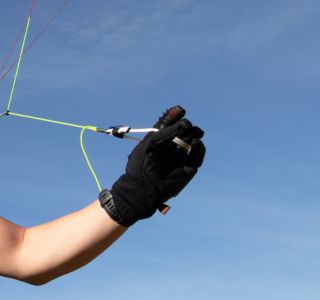
Gloves
Wearing gloves is recommended to protect your hands from wind, cold, and potential friction during launches and landings. They also provide a better grip on the controls and help maintain comfort during flights.
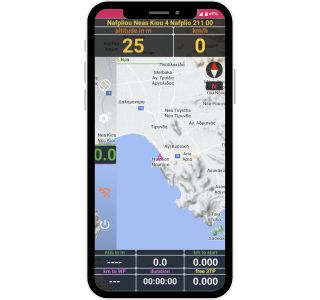
Variometer / Flight Tracking App
Variometer and tracking apps can be installed on smartphones or smartwatches to provide variometer functionality and record a track of your flights without the need for extra equipment. These apps utilize the device’s sensors to measure altitude changes and offer audio or visual cues, simulating the features of a dedicated variometer or flight computer.
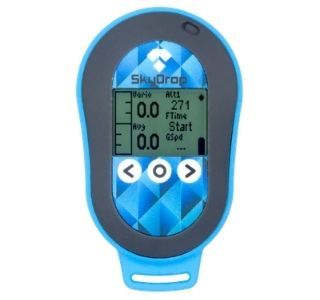
Variometer
A variometer is a highly sensitive altimeter that detects changes in altitude, even as small as 10 cm. It provides information about your relative change in altitude while flying. Variometers, or vario for short, come in various models with different features:
- Basic models
Affordable variometers provide audible signals indicating the rate of climb or descent, which can be sensed by the pilot. - Advanced models
Some variometers include GPS functionality, allowing for additional features such as navigation and airspace information.
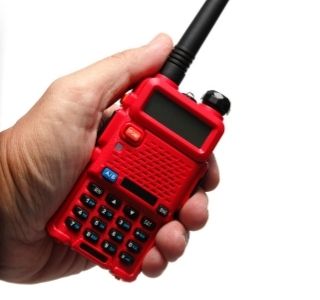
Radio
Most pilots carry one or two radios when flying. These radios facilitate communication between pilots and other individuals on the ground, such as chase cars. Some pilots also carry an airband radio for operations in restricted airspace. There are different types of radios used in paragliding:
- UFH Radio
This type of radio operates on a short-range line-of-sight radio band available for use by the general public. UHF radios are commonly used for in-flight communication as they can transmit over considerable distances when there are no obstacles obstructing the signal. No license is needed for this type of radio. - VHF Radio
VHF is a restricted radio band with channels available for use in free flight, depending on the country’s regulations. Typically, VHF radios have a range of around 10 km, depending on the landscape. It’s essential to use VHF radios within the legal framework of each country, as misuse may carry penalties. - Airband Radio
Airband radios are specifically designed for aircraft and air traffic control communication. If you intend to fly in controlled airspace, you will need proper licensing and an airband radio. Many pilots do not use airband radios unless they are required for specific airspace restrictions since obtaining certification and acquiring a separate radio can be an involved process.
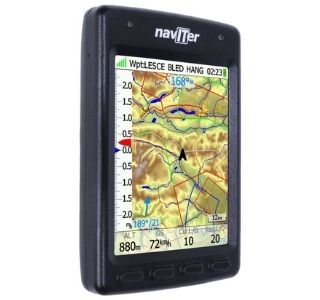
Paraglider GPS
If you plan to fly long distances or navigate complex controlled airspace, having a GPS device becomes essential.
Paragliding-specific GPS models are available, incorporating internal batteries, weatherproofing, and easy-to-read screens that remain visible even in bright sunlight.
Such units are particularly valuable for long-distance pilots. However, beginners may find the added complexity overwhelming, potentially distracting them from more important tasks.
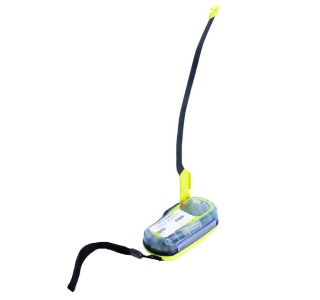
Personal Locator Beacon
A PLB, or personal locator beacon, is a crucial safety device for pilots flying in remote mountainous regions where there is no contact with the outside world.
In case of emergencies where there is no radio or cellphone reception, a PLB sends a distress signal via satellite to authorities, enabling them to initiate a search and rescue operation.
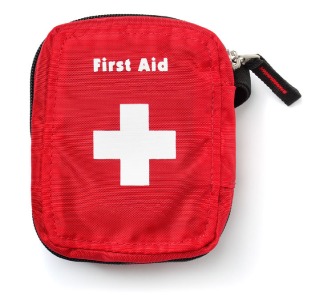
Frist-aid Kit
While technically optional, a first aid kit is highly recommended for every pilot.
Even though it may primarily be used for minor cuts and issues, having a well-equipped first aid kit is essential in the event of a more serious injury.
Knowing how to use the items in the kit is equally important.
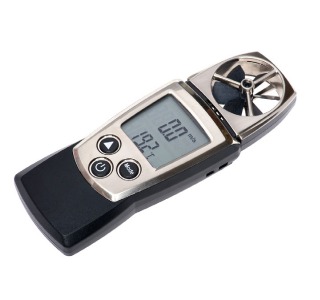
Anemometer: Measuring Wind Speed
An anemometer is a vital tool for paragliders, providing wind speed and direction measurements. It helps pilots make informed decisions about takeoff, landing, and flying maneuvers. By assessing wind conditions, pilots can ensure safe and optimal flights. An anemometer is a valuable addition to your paragliding gear, enhancing safety and enjoyment. Consult experienced pilots and weather resources for guidance on wind conditions.
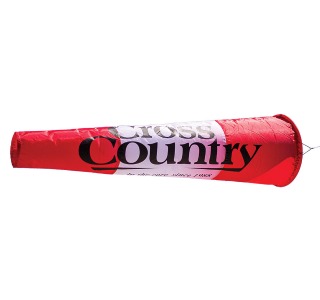
Windsock
A windsock is a helpful tool for assessing wind direction and speed before takeoff. It provides visual cues that assist pilots in making informed decisions about launching and landing.
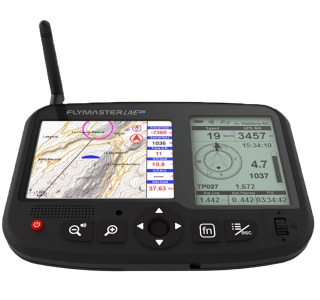
Flight Instruments
Flight instruments can enhance your flying experience by providing valuable information about altitude, airspeed, and direction. Some common flight instruments include:
- Altimeter: Measures the altitude above sea level and helps maintain safe vertical separation.
- Airspeed Indicator: Displays the airspeed of the glider and assists in optimizing performance.
- Compass: A compass can help with navigation and orientation during flights.
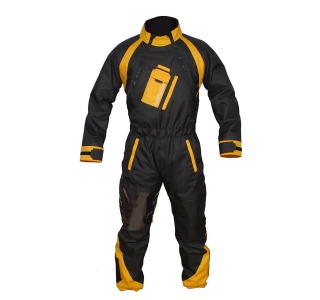
Flight Suit
A flight suit is a specialized jumpsuit designed for paragliding. It offers protection against wind, cold temperatures, and abrasion, while also providing freedom of movement. Flight suits are particularly beneficial for pilots engaged in longer flights or flying in colder climates.
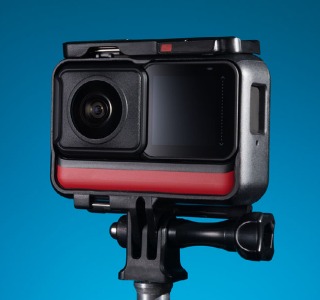
Action Camera (GoPro or 360 Camera)
For those interested in capturing their paragliding adventures, mounting a GoPro or action camera can allow you to capture stunning footage and share your experiences with others.
It’s worth noting that while these additional items can enhance your flying experience, they are not essential for getting started in paragliding. As you gain more experience and refine your preferences, you can consider adding these optional pieces of equipment to your setup.
Conclusion
In conclusion, paragliding requires essential equipment such as a paraglider wing, reserve parachute, harness, and helmet. Optional gear, including radios, variometers, GPS devices, and cameras, can enhance the flying experience. However, beginners should prioritize safety and focus on building their skills. As you progress in paragliding, you can explore additional equipment to suit your preferences and goals. Remember to prioritize safety and seek guidance from experienced pilots. Enjoy the exhilarating world of paragliding!

